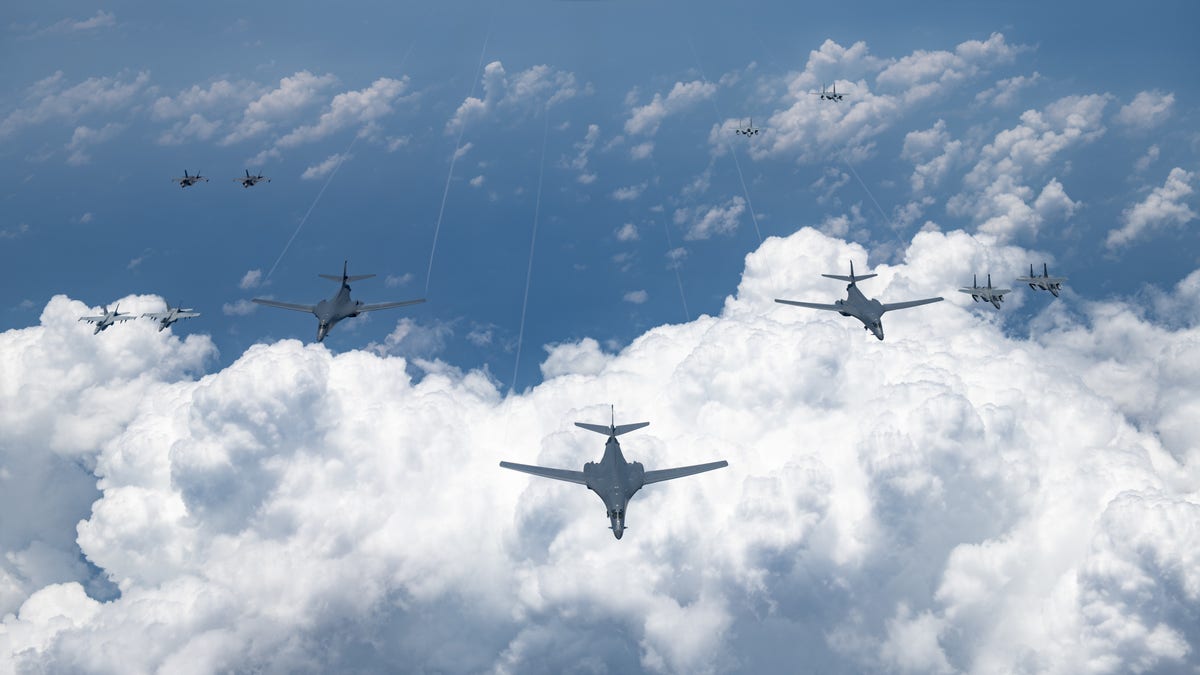Fox News Flash top headlines for September 10
Fox News Flash top headlines are here. Check out what's clicking on Foxnews.com.
U.S. Air Force B-2s bombers are finding and attacking targets in the Pacific to ensure combat readiness, adjust to moving enemy formations and coordinate warfare operations with Australian Marines.
Operating with B-2s and B-1B bombers, both U.S. and Australian Joint Tactical Air Controllers “worked alongside Australian Tiger Armed Reconnaissance Helicopters and U.S. Marine Corps RQ-21A Blackjacks to identify and surveil simulated targets,” an Air Force report stated.
The exercise is part of a strategic effort to refine, increase and accelerate Bomber Task Force operations throughout the Pacific, according to senior Air Force commanders. The concept is to implement more readiness and combat training activities to move toward a less "static" global force posture.
“We are sustaining a surge in bomber operations. BTFs [Bomber Task Forces] are vital to demonstrate our commitment to peace and stability. We need to be unpredictable and keep potential adversaries off balance. We were too predictable and too inflexible and became imbalanced, placing presence over readiness. We are transitioning to a dynamic force-deployment model,” Maj. Gen. Mark E. Weatherington, commander, Eighth Air Force, and commander, Joint-Global Strike Operations Center, told The Mitchell Institute for Aerospace Studies in a video interview.
NEW AIR FORCE STEALTH BOMBER ARRIVES IN JUST '2 YEARS'
Air-ground coordination, with advanced targeting and multi-platform networking, is increasingly significant given the changing threat landscape in the Pacific. Bombers need to operate with an increased ability to maneuver and adjust to new targets in flight, all while sharing information with other bombers, helicopters, ground forces and even allied militaries, all activities explored in this U.S.-Australian Defense Forces exercise.

U.S. Air Force, Navy, Marine Corps and Japan Air Self Defense Force aircraft conduct a large-scale joint and bilateral integration training exercise Aug. 18, 2020 - file photo. (U.S. Air Force photo by Staff Sgt. Peter Reft)
The B-2, operating in tandem with B-1B bombers, dropped live weapons on targets and practiced coordinated rapid-air strikes and air-to-ground “low-pass coverage.”
These kinds of target adjustments are of growing relevance to platforms like the B-2 flying in the Pacific because the stealth bombers would need to confront mobile Chinese weapons, such as Russian-built air defenses.
China is known to have a large number of mobile launchers for a wide range of weapons. Therefore, should a B-2 need to take out missile launch sites capable of firing a DF-26 2,000-mile-ranged anti-ship missile, it will need to adjust to new targets in flight.
NEW AIR FORCE NUCLEAR-ARMED ICBMS TO DEPLOY BY 2029
This is part of the rationale for the current U.S. efforts to modernize the B-2 with the new Defensive Management System. This sensor, now being integrated into the Air Force’s fleet of B-2s, enables crews to identify locations of enemy air defenses and thus, fly around them.
This is also part of why networking is so important, as it can enable a B-2 or comparable platform to pass along target information or the location of enemy air defenses to other aircraft, such as a less-stealthy B-1B bomber. The use of JTACs, as described by the Air Force report, is quite significant here as they can operate in strategically vital ground areas to help alert aircraft about new target information.
Operating during the exercise alongside B-2s, the B1-B also practices engaging moving targets.
CLICK HERE TO GET THE FOX NEWS APP
“The B-1B is capable of tracking, targeting and engaging moving vehicles, and the fully integrated datalink with Link-16 capability provides improved battlefield situational awareness and security beyond line of sight reach back connectivity,” the Air Force report states.
-- Kris Osborn is the Managing Editor of Warrior Maven and The Defense Editor of The National Interest --

